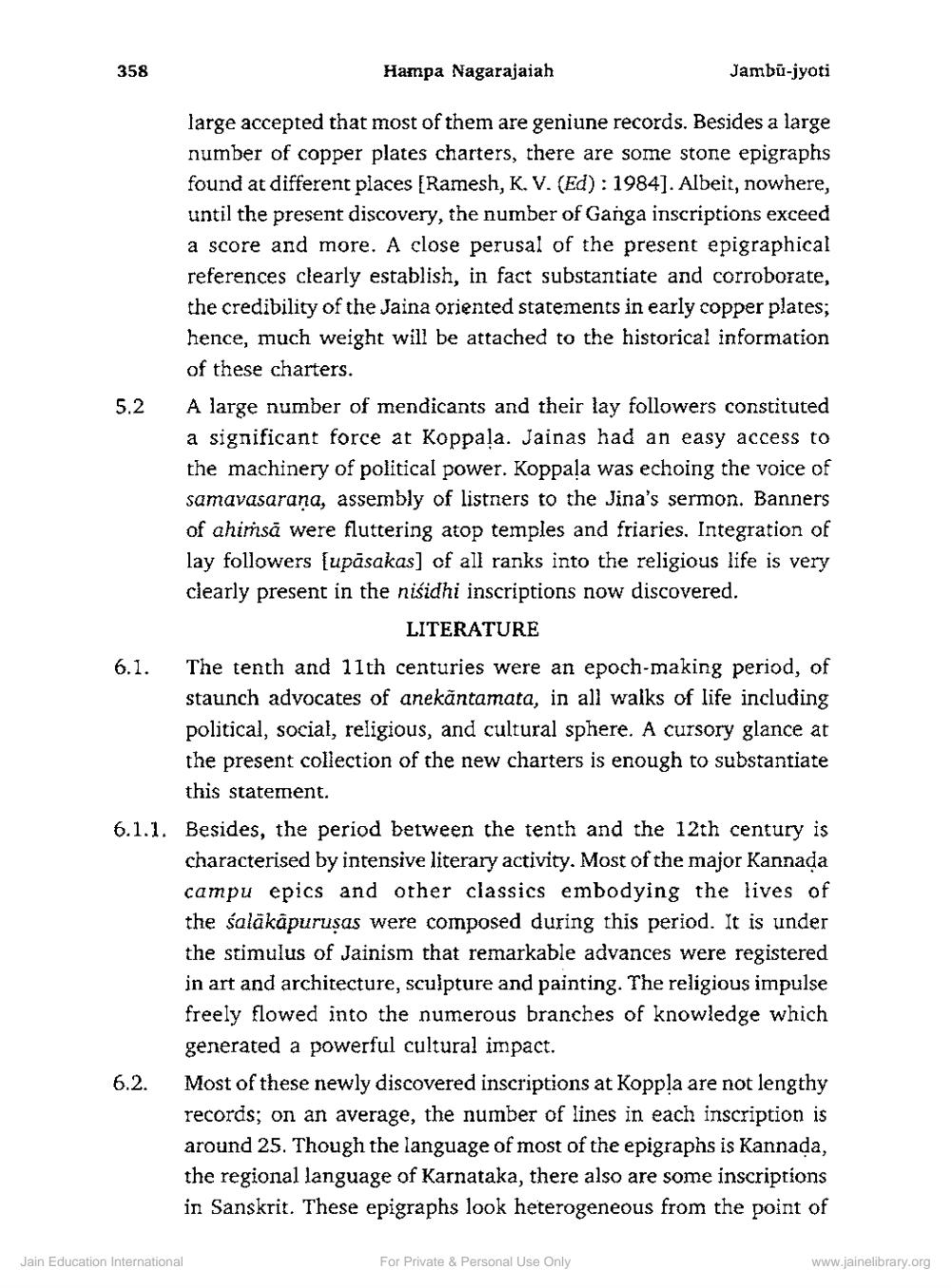Book Title: Significance of New Inscriptions from Koppala Karnataka Author(s): Hampa Nagrajaiha Publisher: Z_Nirgranth_Aetihasik_Lekh_Samucchay_Part_1_002105.pdf and Nirgranth_Aetihasik_Lekh_Samucchay_Part_2 View full book textPage 5
________________ 358 Hampa Nagarajaiah Jambū-jyoti large accepted that most of them are geniune records. Besides a large number of copper plates charters, there are some stone epigraphs found at different places (Ramesh, K. V. (Ed): 1984). Albeit, nowhere, until the present discovery, the number of Ganga inscriptions exceed a score and more. A close perusal of the present epigraphical references clearly establish, in fact substantiate and corroborate, the credibility of the Jaina oriented statements in early copper plates; hence, much weight will be attached to the historical information of these charters. 5.2 A large number of mendicants and their lay followers constituted a significant force at Koppala. Jainas had an easy access to the machinery of political power. Koppala was echoing the voice of samavasarana, assembly of listners to the Jina's sermon. Banners of ahimsā were fluttering atop temples and friaries, Integration of lay followers (upāsakas] of all ranks into the religious life is very clearly present in the niśidhi inscriptions now discovered. LITERATURE 6.1. The tenth and 11th centuries were an epoch-making period, of staunch advocates of anekāntamata, in all walks of life including political, social, religious, and cultural sphere. A cursory glance at the present collection of the new charters is enough to substantiate this statement. 6.1.1. Besides, the period between the tenth and the 12th century is characterised by intensive literary activity. Most of the major Kannada campu epics and other classics embodying the lives of the salākāpuruşas were composed during this period. It is under the stimulus of Jainism that remarkable advances were registered in art and architecture, sculpture and painting. The religious impulse freely flowed into the numerous branches of knowledge which generated a powerful cultural impact. 6.2. Most of these newly discovered inscriptions at Koppla are not lengthy records; on an average, the number of lines in each inscription is around 25. Though the language of most of the epigraphs is Kannada, the regional language of Karnataka, there also are some inscriptions in Sanskrit. These epigraphs look heterogeneous from the point of Jain Education International For Private & Personal Use Only www.jainelibrary.orgPage Navigation
1 ... 3 4 5 6 7 8 9 10 11 12 13 14 15 16 17 18 19 20
